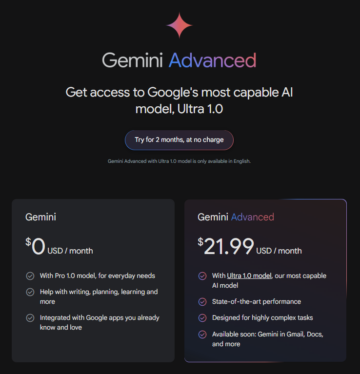Introduction
AI’s integration into various sectors, from healthcare to retail, banking to logistics, and entertainment to manufacturing, has been revolutionary. Its impact extends into sports, glorifying a new era of innovation and optimization. Under manager Jürgen Klopp, Liverpool FC has adopted state-of-the-art AI technology by collaborating with DeepMind to develop TacticAI. This innovative assistant coach analyzes and optimizes corner-kick tactics.
Leveraging geometric deep learning and group equivariant convolutional networks, TacticAI predicts potential outcomes and generates alternative player setups, empowering coaches to make data-driven decisions during crucial set-pieces. Validated through a multi-year research project involving Liverpool FC experts, TacticAI’s tactical recommendations were indistinguishable from real tactics. They preferred 90% of the time, underscoring its potential to provide teams with a competitive edge through intelligent AI-assisted coaching. Fascinating right? Further in this article, we will dissect how TacticalAI is helpful for Liverpool FC.
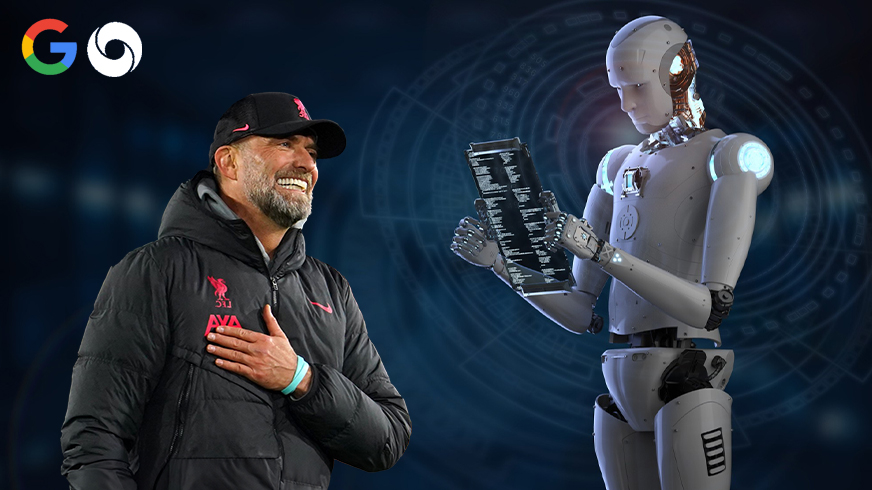
Table of contents
TacticAI is an innovative AI football tactics assistant designed to analyze and improve corner kicks in football. This cutting-edge technology addresses the challenge of identifying key patterns of tactics implemented by rival teams and developing effective responses, which is crucial in modern football. The research paper on “TacticAI: an AI assistant for football tactics” proposes TacticAI as a solution to this unmet need, emphasizing its development and evaluation in close collaboration with domain experts from Liverpool FC.
Analyzing and Improving Corner Kicks with TacticAI
TacticAI focuses on analyzing corner kicks, as they offer coaches direct opportunities for interventions and improvements. TacticAI incorporates both a predictive and a generative component, allowing coaches to sample and explore alternative player setups for each corner kick routine and select those with the highest predicted likelihood of success. The utility of TacticAI is validated through a qualitative study conducted with football domain experts at Liverpool FC, demonstrating its effectiveness in providing tactical suggestions for corner kicks.
Dual Power: Prediction and Generation for Tactical Exploration
TacticAI’s dual power of prediction and generation enables coaches to predict receivers and shot attempts, recommend player position adjustments, and explore alternative player setups for corner kick routines. This unique combination of predictive and generative components empowers coaches to make informed decisions and explore tactical variations that can improve outcomes significantly.
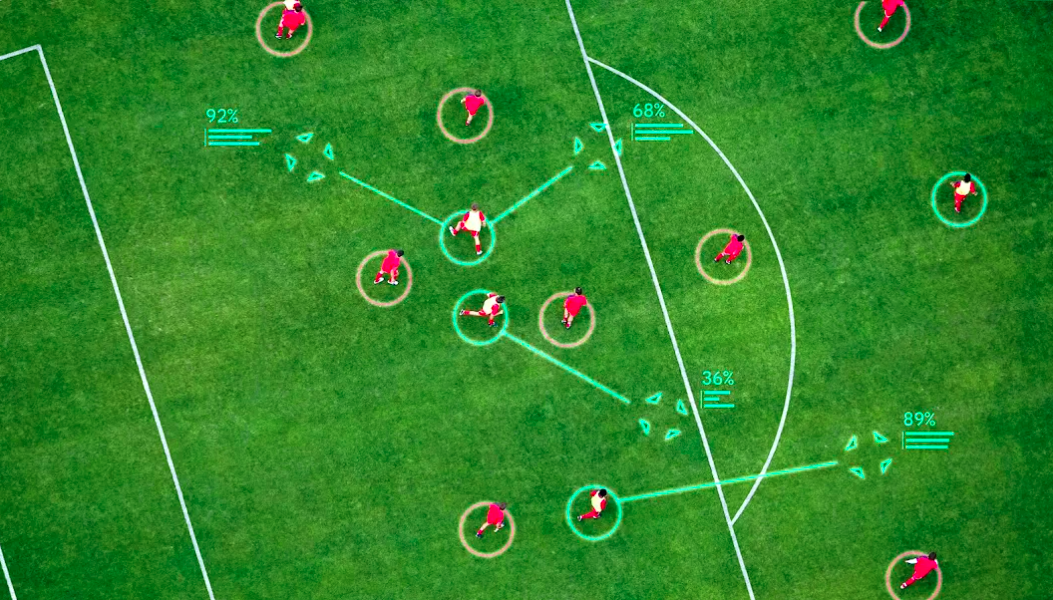
A Study with Liverpool FC Experts
TacticAI’s utility was rigorously validated through a qualitative study conducted in collaboration with football domain experts at Liverpool FC. The study aimed to assess the effectiveness and practical applicability of TacticAI’s model suggestions in real-world football scenarios. The results revealed that TacticAI’s model suggestions were indistinguishable from real tactics and were favored over existing tactics 90% of the time. This demonstrates the high level of acceptance and preference for TacticAI’s tactical recommendations among human experts in the football domain.
It’s worth noting that TacticAI was developed and evaluated as part of a multi-year research collaboration between DeepMind and Liverpool FC. The involvement of domain experts from Liverpool FC was crucial in shaping TacticAI’s capabilities and ensuring its practical applicability in real-world football scenarios.
Data Efficiency through Geometric Deep Learning
TacticAI achieves data efficiency through the innovative application of geometric deep learning. By processing labeled spatiotemporal football data into graph representations and training and evaluating spatiotemporal benchmarking tasks, TacticAI can provide accurate and realistic tactical recommendations despite the limited availability of gold-standard data. This approach allows TacticAI to incorporate various symmetries of the football pitch efficiently, improving data efficiency and enhancing the quality of its tactical suggestions.
How Geometric Deep Learning Works?
TacticAI is rooted in learning efficient representations of corner kick tactics from raw, spatio-temporal player tracking data. It utilizes this data by representing each corner kick situation as a graph, a natural representation for modeling player relationships. These player relationships are of higher importance than the absolute distances between them on the pitch. The graph input is a natural candidate for graph machine learning models employed within TacticAI to obtain high-dimensional latent player representations.
Specifically, TacticAI’s geometric deep learning approach is a variant of the Group Equivariant Convolutional Network that generates all four possible reflections of a given situation and forces predictions to be identical across them. TacticAI takes advantage of geometric deep learning to explicitly produce player representations that respect several symmetries of the football pitch.
Building the Foundation
To construct the input graphs, the data sources are aligned for their game IDs and timestamps. Invalid corner kicks are filtered out, resulting in a dataset of 7176 valid ones for training and evaluation. The input graphs include features such as player positions, player velocities, and player weights, which are used to construct the graph neural network. The graph feature vector stores global attributes of interest to the corner kick, such as the game time, current score, or ball position.
Benchmarking Success
TacticAI is designed with three distinct predictive and generative components: receiver prediction, shot prediction, and tactic recommendation through guided generation. These components correspond to the benchmark tasks for quantitatively evaluating TacticAI. The interplay between TacticAI’s predictive and generative components allows coaches to sample alternative player setups for each routine of interest and directly assess the possible outcomes of such alternatives.
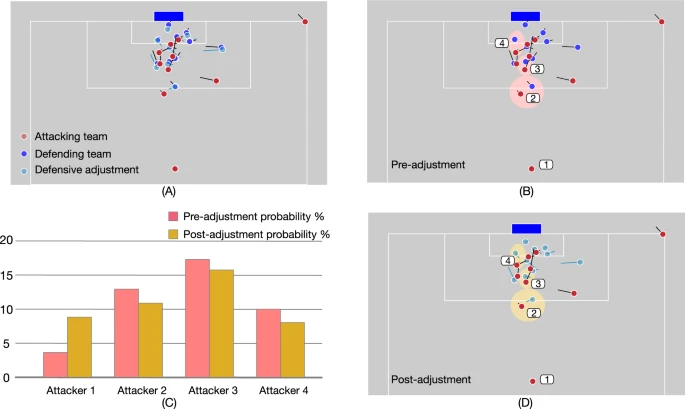
Graph Neural Networks (GNNs) & Geometric Deep Learning (GDL)
TacticAI leverages graph neural networks (GNNs) and geometric deep learning (GDL) to process labeled spatiotemporal football data into graph representations. The GDL approach allows TacticAI to efficiently incorporate various symmetries of the football pitch, improving data efficiency and enhancing the quality of its tactical suggestions.
Frame Averaging for Invariance and Improved Predictions
TacticAI employs frame averaging to enforce invariance and improve predictions. This technique ensures that TacticAI’s player representations are identically computed under reflections, such that this symmetry does not have to be learned from data. By applying possible combinations of reflections to the input corner, TacticAI can compute the final player representations, which are used to predict the corner’s receiver, whether a shot has been taken, and assistive adjustments to player positions and velocities.
How TacticAI Leverages Them
TacticAI leverages the capabilities of geometric deep learning and graph neural networks to process and analyze spatiotemporal football data, providing accurate and realistic tactical recommendations for corner kicks. By explicitly producing player representations that respect the symmetries of the football pitch and employing frame averaging for invariance, TacticAI enhances its predictive and generative components, allowing for more accurate and effective tactical suggestions.

Group Equivariant Convolutional Networks in TacticAI
Deep convolutional neural networks (CNNs) have demonstrated their effectiveness in modeling sensory data such as images, video, and audio. However, a comprehensive theory of neural network design is currently lacking. Empirical evidence suggests that convolutional weight sharing and depth, among other factors, play a crucial role in achieving good predictive performance.
Beyond Regular CNNs
Convolutional weight-sharing is effective due to the translation symmetry present in most perception tasks. This symmetry implies that the label function and data distribution are approximately invariant to shifts. By utilizing the same weights to analyze or model each part of an image, a convolution layer significantly reduces the number of parameters while retaining the capacity to learn various useful transformations.
G-CNNs introduce a natural generalization of convolutional neural networks, leveraging symmetries to reduce sample complexity. They utilize G-convolutions, a new type of layer that offers a substantially higher degree of weight sharing compared to regular convolution layers. This increased weight sharing enhances the network’s expressive capacity without inflating the number of parameters.
Increased Expressive Power with Weight-Sharing
G-convolutions are a key component of G-CNNs, enabling higher weight sharing than traditional convolution layers. This increased weight sharing allows G-CNNs to learn a wide range of transformations while maintaining a compact parameter space. By using the same weights to analyze or model different parts of an image, G-CNNs achieve enhanced expressive power without introducing excessive parameters.
Why Standard CNNs Fall Short?
In section 5 of the research paper, the equivariance properties of standard CNNs are analyzed, revealing that they are equivariant to translations but may fail to equivary with more general transformations. This limitation underscores the need for a more generalized approach, leading to the development of G-CNNs. The paper demonstrates that G-convolutions and various layers used in modern CNNs, such as pooling, arbitrary pointwise nonlinearities, batch normalization, and residual blocks, are all equivariant and compatible with G-CNNs.
[embedded content]
The Math Behind G-CNNs: Building the Framework
In this section, we will talk about the math behind G-CNNs:
Symmetry Groups, Group Functions, and G-Equivariant Correlation
The mathematical framework for G-CNNs involves defining and analyzing G-CNNs for various groups. It begins by defining symmetry groups and studying two specific groups used in G-CNNs. The section delves into the study of functions on groups, which are utilized to model feature maps in G-CNNs, and their transformation properties. The framework also explores the concept of G-equivariant correlation, which plays a crucial role in understanding the behavior of feature maps under group transformations.
Implementing G-Convolutions
The implementation of G-convolutions is a key aspect of G-CNNs. This section provides insights into the practical implementation of G-convolutions using loops, parallel kernels, and efficiency. It discusses the preferred method of composing group elements represented by integer tuples, involving the conversion to matrices, matrix multiplication, and the subsequent conversion back to tuples of integers. The section emphasizes the efficiency of implementing G-convolutions, highlighting the straightforward implementation using indexing arithmetic and inner products and the utilization of recent advances in the fast computation of planar convolutions.
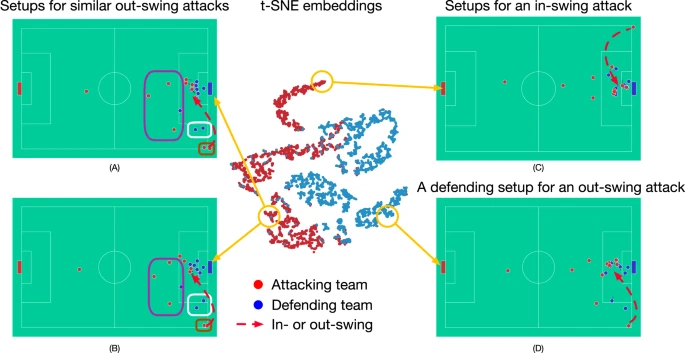
Conclusion
TacticAI represents a significant advancement in football tactics analysis and optimization. TacticAI offers a novel and effective approach to predicting and perfecting corner kick tactics by harnessing the power of geometric deep learning and group equivariant convolutional networks.
The combination of TacticAI’s predictive and generative components empowers coaches to explore alternative player setups, evaluate potential outcomes, and make informed decisions to improve their team’s performance during corner kick routines. The validation study conducted with football domain experts at Liverpool FC highlights the practical applicability and effectiveness of TacticAI’s tactical suggestions, which were indistinguishable from real-world tactics and preferred over existing strategies.
As sports analytics advances, TacticAI paves the way for a new era of AI-assisted coaching, empowering teams and coaches to gain a competitive edge through data-driven, intelligent tactics optimization.
- SEO Powered Content & PR Distribution. Get Amplified Today.
- PlatoData.Network Vertical Generative Ai. Empower Yourself. Access Here.
- PlatoAiStream. Web3 Intelligence. Knowledge Amplified. Access Here.
- PlatoESG. Carbon, CleanTech, Energy, Environment, Solar, Waste Management. Access Here.
- PlatoHealth. Biotech and Clinical Trials Intelligence. Access Here.
- Source: https://www.analyticsvidhya.com/blog/2024/03/ai-in-football-liverpool-fc-uses-deepminds-tacticai-for-high-impact-corner-kicks/
- :has
- :is
- :not
- 5
- a
- About
- Absolute
- acceptance
- accurate
- Achieve
- Achieves
- achieving
- across
- addresses
- adjustments
- adopted
- advancement
- advances
- ADvantage
- AI
- AI assistant
- aimed
- aligned
- All
- Allowing
- allows
- also
- alternative
- alternatives
- among
- an
- analysis
- analytics
- analyze
- analyzed
- analyzes
- analyzing
- and
- Application
- Applying
- approach
- approximately
- arbitrary
- ARE
- arithmetic
- article
- AS
- aspect
- assess
- Assistant
- At
- Attempts
- attributes
- audio
- availability
- averaging
- back
- ball
- Banking
- BE
- been
- begins
- behavior
- behind
- Benchmark
- benchmarking
- between
- Blocks
- both
- Building
- but
- by
- CAN
- candidate
- capabilities
- Capacity
- challenge
- Close
- coach
- coaching
- collaborating
- collaboration
- combination
- combinations
- compact
- compared
- compatible
- competitive
- complexity
- component
- components
- composing
- comprehensive
- computation
- Compute
- computed
- concept
- conducted
- construct
- content
- Conversion
- Corner
- Correlation
- correspond
- crucial
- Current
- Currently
- cutting-edge
- cutting-edge technology
- data
- data-driven
- decisions
- deep
- deep learning
- DeepMind
- defining
- Degree
- delves
- demonstrated
- demonstrates
- demonstrating
- depth
- Design
- designed
- Despite
- develop
- developed
- developing
- Development
- different
- direct
- directly
- discusses
- distinct
- distribution
- does
- domain
- dual
- due
- during
- each
- Edge
- Effective
- effectiveness
- efficiency
- efficient
- efficiently
- elements
- embedded
- emphasizes
- emphasizing
- employed
- employing
- employs
- empowering
- empowers
- enables
- enabling
- enforce
- enhanced
- Enhances
- enhancing
- ensures
- ensuring
- Entertainment
- Era
- Ether (ETH)
- evaluate
- evaluated
- evaluating
- evaluation
- evidence
- excessive
- existing
- experts
- explicitly
- explore
- explores
- expressive
- extends
- eye
- factors
- FAIL
- Fall
- fascinating
- FAST
- favored
- fc
- Feature
- Features
- final
- focuses
- Football
- For
- Forces
- four
- FRAME
- Framework
- from
- function
- functions
- further
- Gain
- game
- gdl
- General
- generalized
- generates
- generation
- generative
- given
- Global
- good
- graph
- graph neural networks
- graphs
- Group
- Group’s
- guided
- Harnessing
- Have
- healthcare
- helpful
- High
- higher
- highest
- highlighting
- highlights
- How
- However
- HTTPS
- human
- identical
- identifying
- ids
- image
- images
- Impact
- implementation
- implemented
- implementing
- implies
- importance
- improve
- improved
- improvements
- improving
- in
- include
- incorporate
- incorporates
- increased
- indistinguishable
- inflating
- informed
- inner
- Innovation
- innovative
- input
- insights
- integer
- integers
- integration
- Intelligent
- interest
- interventions
- into
- introduce
- introducing
- invalid
- involvement
- involves
- involving
- IT
- ITS
- jpg
- Key
- kick
- Kicks
- Label
- lacking
- layer
- layers
- leading
- LEARN
- learned
- learning
- Level
- leverages
- leveraging
- likelihood
- limitation
- Limited
- logistics
- loops
- machine
- machine learning
- maintaining
- make
- manager
- manufacturing
- Maps
- math
- mathematical
- Matrix
- max-width
- May..
- method
- model
- modeling
- models
- Modern
- more
- most
- multi-year
- multiplication
- Natural
- Nature
- Need
- network
- networks
- Neural
- neural network
- neural networks
- New
- noting
- novel
- number
- obtain
- of
- offer
- Offers
- on
- ones
- opportunities
- optimization
- Optimizes
- or
- Other
- out
- outcomes
- over
- overview
- Paper
- Parallel
- parameter
- parameters
- part
- parts
- patterns
- paves
- perception
- perfecting
- performance
- Pitch
- plato
- Plato Data Intelligence
- PlatoData
- Play
- player
- plays
- pooling
- position
- positions
- possible
- potential
- power
- Practical
- predict
- predicted
- predicting
- prediction
- Predictions
- predictive
- Predicts
- preferred
- present
- process
- processing
- produce
- producing
- Products
- project
- properties
- proposes
- provide
- provides
- providing
- qualitative
- quality
- range
- Raw
- real
- real world
- realistic
- recent
- recommend
- Recommendation
- recommendations
- reduce
- reduces
- refining
- Reflections
- regular
- Relationships
- representation
- representations
- represented
- representing
- represents
- research
- research collaboration
- respect
- responses
- resulting
- Results
- retail
- retaining
- Revealed
- revealing
- revolutionary
- right
- Rival
- Role
- rooted
- routine
- routines
- s
- same
- sample
- scenarios
- score
- Section
- Sectors
- select
- several
- shaped
- shaping
- sharing
- Shifts
- Short
- shot
- significant
- significantly
- situation
- solution
- Sources
- Space
- specific
- Sports
- standard
- state-of-the-art
- stores
- straightforward
- strategies
- Study
- Studying
- subsequent
- substantially
- success
- such
- Suggests
- symmetry
- tactical
- tactics
- taken
- takes
- Talk
- tasks
- teams
- technique
- Technology
- than
- that
- The
- The Graph
- their
- Them
- theory
- These
- they
- this
- those
- three
- Through
- time
- to
- Tracking
- traditional
- Training
- Transformation
- transformations
- Translation
- Translations
- two
- type
- under
- underscores
- understanding
- unique
- unmet
- used
- useful
- uses
- using
- utility
- utilization
- utilize
- utilized
- utilizes
- Utilizing
- valid
- validated
- validation
- Variant
- variations
- various
- vector
- Video
- was
- Way..
- we
- weight
- were
- whether
- which
- while
- wide
- Wide range
- will
- with
- within
- without
- works
- worth
- youtube
- zephyrnet

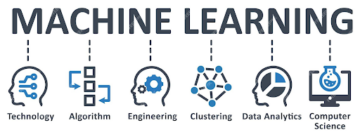






![What is AI in Manufacturing? [Explore 10 Use Cases]](https://platoaistream.net/wp-content/uploads/2023/08/what-is-ai-in-manufacturing-explore-10-use-cases-360x194.png)
